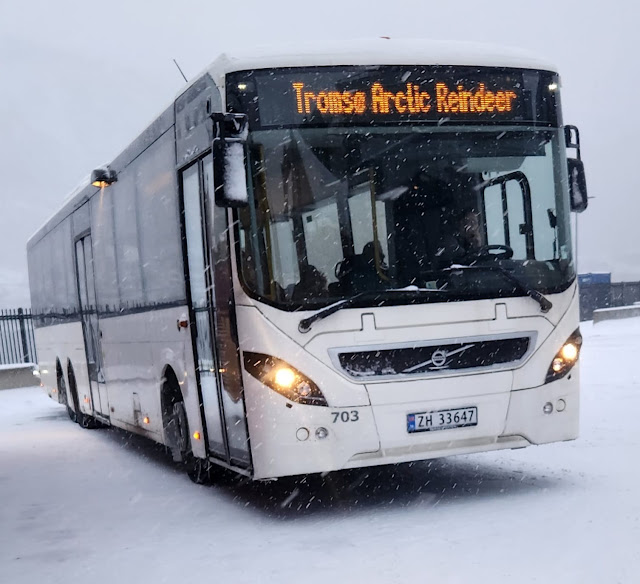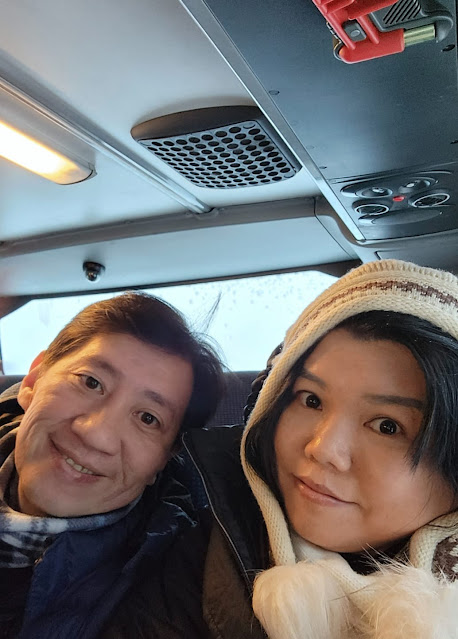"Those who don't believe in magic will never find it."
Who are the Sámi People?
Tromsø is nicknamed the “Gateway to the Arctic”, located 350km of the Polar Circle it has the population of 76,734.
Established since 1838, the history dates back to the Viking Age and has the strong ties with the Indigenous Sámi Tribe people.
The Sámi are the traditionally Sami-speaking peoples inhabiting the region of Sápm which today encompasses large northern parts of Norway, Sweden, Finland and of the Kola Peninsula in Russia. Due to the long history of near 4,000 year, there are more than 10 dialects of the Sámi language.
How do the Sámi People live?
Traditionally, the Sámi have pursued a variety of livelihoods, including coastal fishing, fur trapping, and sheep herding. Their best-known means of livelihood is nomadic reindeer herding. As of 2007 about 10% of the Sámi were connected to reindeer herding, which provides them with meat, fur, and transportation; around 2,800 Sámi people were actively involved in reindeer herding on a full-time basis in Norway. For traditional, environmental, cultural, and political reasons, reindeer herding is legally reserved for only Sámi in some regions of the Nordic countries.
Sámi People are Recognized.
The Sámi have for centuries, been the subject of discrimination and abuse by the dominant cultures in the nations they have historically inhabited.
Today, The Sámi are strongly recognized and respected by Norwegian's law that the government set up a parliament for The Sámi.
Strict laws were imposed to strengthen and protect The Sámi culture and the communities.
Arctic Reindeer Tour and Sledding
By The Tromsø Arctic Reindeer
4 hours included lunch.
Price: NOK3580 / SGD442.74 for 2 people
The tour is conducted from the original reindeer herding family that is 30 minutes' drive away from Tromsø.
Norway is an expensive destination at the best of times, but life in the Arctic seems to come with extra costs attached. It will be a once in the lifetime experience and the expensive tour tickets price will goes to the care to the reindeers too.
We went to report for our tour and get up to the bus which is located just 2 minutes' walk from Scandic Ishavshotel. Remember to wear your snow boots aside all the winter gears to cover from the cold.
We were given band to indicate that we have sledding activity.
After 25minutes bus ride and we soon found ourselves being surrounded by 300 reindeers.
Pre-Tour Briefing
Upon arrival, we went a briefing with the tour conductor in the Sami hut (Lavvu).
The outskirt of Tromsø is pretty cold and the insides of the tent was very warm and cozy.
The big is full of logged benches that are cover hides, campfire and a self-service point for drinks and snacks.
The Different types of the Houses of The Sámi
1) Lavvu
The Sámi people, an indigenous group in Norway, have traditionally lived in a variety of structures that are well-suited to their nomadic lifestyle. The most recognized type of Sámi home is the "lavvu" which was traditionally used by Mountain Sámi families as they migrated with their reindeer. A typical tent stands around 20 feet tall and can hold six to eight people.
"Lavvu" needed to be lightweight and easy to assemble. Reindeer pulled the materials along on sledges. When it was time to make camp, herders erected large structural poles ringed by smaller branches. They then wrapped the cone in reindeer hides and sheets of birch bark, secured by ropes or strips of the foundation. A hole was left at the top for smoke to escape. Inside the tent, family members gathered around a central hearth, the floor covered in reindeer furs. The one we visited today is the typical "lavvu"
 |
| The Lavvu of yesterday from google. |
 |
| The Lavvu of today. |
2) Goahti
At other times, Sámi people occupied more permanent housing like the "goahti". A "goahti" is similar in shape to the "lavvu" but generally larger and more stable. It could be covered in wood, turf, or skins. The Forest Sámi specialized in "goahti" and built wooden storehouses on stilts. By Elevating their supplies to protected them from bears and other animals while they are away.
 |
| The Goahti from the google. |
3) Gamme
The "gamme" is another type of semi-permanent residence that was built by Sámi people of every lifestyle. Coastal Sámi lived in the "gamme" year-round until moving into Scandinavian-style housing. Mountain Sami kept two huts at their winter and summer settlements. They moved between the two throughout the year, staying in their "lavvu" while in the field. Gamme are supported by curved wooden poles forming a dome. The dome is then covered in sod and allowed to grow over until it blends into the countryside.
Today, most Sámi people live in Western-style homes but continue to use "lavvu" tents made from modern materials when camping or herding reindeers.
 |
| The Gamme from the google |
Sámi's Clothes
"Gákti" are the traditional clothing worn by the Sámi people. The "gákti" is worn both in ceremonial contexts and while working, particularly when herding reindeer. Traditionally, the "gákti" was made from reindeer leather and sinews, but nowadays, it is more common to use wool, cotton, or silk. Women's "gákti" typically consist of a dress, a fringed shawl that is fastened with 1–3 silver brooches, and boots/shoes made of reindeer fur or leather that comes with band-woven ankle wraps. Men's "gákti" have a shorter "jacket-skirt" than a women's long dress. Traditional "gákti" are most commonly in variations of red, blue, green, white, medium-brown tanned leather, or reindeer fur. In winter, there is the addition of a reindeer fur coat and leggings, and sometimes a poncho ("luhkka").
If I remember correctly, singles Sami wear belt with round buckles and married one wore square buckles.
 |
| The local man in the traditional clothe from google |
Reindeer Feeding Time
We were given buckets of dried feed as we will walk towards the reindeer where they were roaming freely on the snowed meadows, look out for their poos.
See the hooves of the reindeer, it is a useful tool that are important for their survival.
These sturdy feet help them to navigate through the snow-covered landscapes, dig for food and maintain stability during their long migrations.
I can feel their thick bushy eye lashes rubbing against my finger when they peeped their heads into the bucket. It is such a unique and amazing feel.
These cuties are very gentle and welcome pets. Some of them were with full grown beautiful antlers, some had missing one antler or uneven antlers (maybe he just got into a fight). And another high possibility is they are going through the process of shredding and regrowing of antlers annually.
Antlers function as a weapon for protection, as well as sexual attractions.
And, not to forget the young calves too, who are always hungry and approachable.
By the way, I did not see Rudolph the red nose reindeer at all. 😝
Reindeer Sledding
One reindeer to a sled, the sled is made of wooded pallet and the seats are covered with reindeer hides.
The sledges are very sturdy, and the reindeers are very strong, there is not really any weight limit and usually 2 adults sharing one sledge. We enjoyed the 30 minutes ride around the valley and along the coast.
The whole lot of us had the sleds tied onto one another and the leader of tour will start to walk by pulling the first reindeer who will pull the first sled and eventually all the reindeers will move.
It is an unforgettable experience, surrounded with beautiful scenery and pretty reindeers.
It is confirmed that these reindeers don't sleigh through the skies during Christmas's eve. 😉
Traditional Sámi Lunch
Known as Bidos, it is a kind of traditional stew of reindeer meat.
Cooking for hours over the campfire which also spread the warmth to us who were sitting around it.
There is option for Vegans too if you are not a meat eater.
The meats are cut into smaller pieces and stewed with spices. water butter, onion and a pinch a salt.
Side ingredients to go with the stew are potatoes and carrots.
Sámi's Songs
"Joik" is the traditional form of songs of Sámi music performed by the Sámi people. It is a unique form of cultural expression for the Sámi people and is one of Europe's oldest traditional songs. The performer of "jiok" is referred to as "joiker" in Norwegian. Each "joik" is meant to reflect or evoke a person, animal or place which is deeply personal or spiritual in nature.
This is how a "happy" song sounded and felt like.
This is how an "expressive" song sounded and felt like.
Summary
The 4-hour ended at around 1400hrs, and we made our way back to Tromsø.
It was such a new experience for us to understand what happened here is the Arctic long long ago.
We were also being told the stories and history of the Sámi people.
The understanding of how the Sámi people evolves over the time. It is definitely not easy for them to achieve the respect they deserved today where they are equal in terms of educations, jobs opportunities and living standards.
This tour is actually not a tour, it is an educating trip.
I think the culture of the Sámi people should be preserved and pass over to our future generations.
Here are the shortcuts to the blogs on our trips in/ from Switzerland around last Christmas:
Between 2022 to 2023, we visited The Netherlands & Belgium, here to share : Amsterdam, The Hague , Rotterdam , Kinderdijk , Naarden ,Muiden , Haarlem , Nijmegan, Brussel, Bruges
Feel free, you are most welcome to browse through my other blogs to France, Japan, China, Thailand, Malaysia and cruises etc.
Next Trip: Bangkok again but this round it is pure sisters' trip for me & Miss Piggy only then I need to go back to Denmark for a month before coming back to Singapore. Please stay tune by liking my Facebook page: followblueginger
Shanghai is in the plan but not confirmed yet, please check out later. :D
"I travel because seeing photos in books and brochures was not good enough for me, To be there, that was everything"























































No comments:
Post a Comment